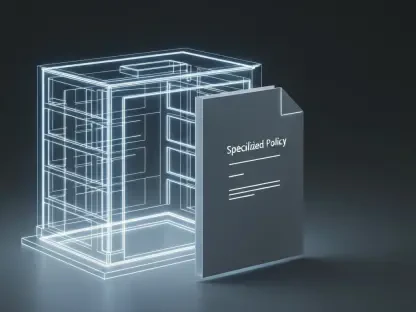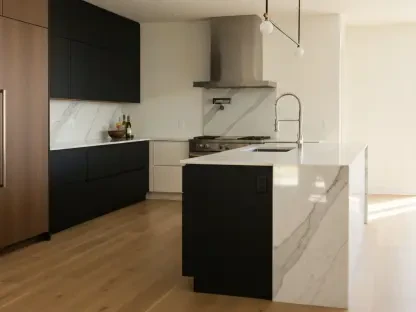The integration of smart technologies into buildings has sparked a revolution in the commercial wiring devices market, transforming how these devices are designed, utilized, and valued. With the ever-growing focus on energy efficiency, connectivity, and intelligent infrastructure, the demand for sophisticated wiring systems in commercial spaces has significantly increased. Companies are now prioritizing investments in advanced electrical solutions to enhance automation, optimize energy management, and improve occupant comfort and safety. The intersection of these trends is not only reshaping the market landscape but also leading to substantial growth opportunities for manufacturers and technology providers.
Market Dynamics and Growth Opportunities
Rising Demand for Energy-Efficient Solutions
With the commercial wiring devices market projected to expand from USD 8.1 billion in 2023 to USD 18.6 billion by 2032, energy efficiency is driving this growth. More businesses are seeking to minimize energy consumption and costs while supporting environmental initiatives. Smart buildings, equipped with innovative wiring systems, present a solution by enabling real-time monitoring and automated optimization of energy use. This surge in demand is opening doors for manufacturers to develop products that offer more than just basic electrical functionality. Devices are now expected to integrate seamlessly with smart building technologies, including Internet of Things (IoT) platforms and building management systems, creating a flexible and efficient network for precise energy control.
Integration with Smart Building Technologies
As commercial environments increasingly embrace smart technologies, the integration of wiring devices into these sophisticated systems becomes essential. Modern devices are now part of interconnected webs that link lighting, HVAC, and security systems into comprehensive platforms. These platforms allow for centralized control and coordination of a building’s various systems. This interconnectedness aligns with current trends in smart city development, where solutions are designed to increase sustainability and operational efficiency across urban infrastructures. For instance, IoT-enabled wiring systems can send continuous energy usage updates to central management hubs, facilitating predictive maintenance and enabling automated responses to energy demands, thereby enhancing efficiency.
Challenges in Standardization and Security
Standardization Issues in a Global Market
Despite the optimistic growth trajectory, the market faces significant challenges, especially in standardizing wiring device technologies across diverse regions. Various regions operate under distinct electrical codes and device communication protocols, creating hurdles for manufacturers aiming for global reach. This lack of standardization complicates product development, pushing companies to create multiple product variants to meet each region’s specific standards. Addressing these inconsistencies is crucial for fostering international expansion. Creating universally recognized standards would facilitate smoother technology integration globally, streamlining product offerings and enabling easier cross-border collaborations, ultimately propelling the industry forward.
Securing Smart Building Infrastructure
Another prominent challenge is ensuring robust cybersecurity for connected wiring devices in smart buildings. As these devices increasingly interface with expansive digital platforms, they become potential targets for cyber threats. Large commercial establishments, especially those handling sensitive data, need cutting-edge security solutions to protect their infrastructures. Cybersecurity threats could severely disrupt operations, leading to substantial financial losses and reputational damage. Hence, manufacturers and service providers must work meticulously on developing systems with built-in security features. Regular updates and patches, coupled with advanced security protocols, will be vital to countering vulnerabilities and safeguarding data integrity in smart commercial spaces.
Regional Market Influences
Leadership of North America and Western Europe
North America and Western Europe are at the forefront of smart building adoption due to robust infrastructure and comprehensive regulatory frameworks. These regions enforce strict building codes and energy-efficiency mandates that are instrumental in fostering the demand for advanced smart wiring systems. Countries like the United States, Canada, Germany, and the United Kingdom are not only focused on upgrading existing structures but are also keen on constructing new buildings with state-of-the-art IoT-ready electrical frameworks. Their commitment to smart city initiatives underscores the importance placed on sustainable, efficient infrastructure that accommodates modern technological advancements.
Emerging Market Potential in Other Regions
While North America and Western Europe lead the charge, other regions are also gaining momentum in adopting smart building technologies. In Asia-Pacific, for instance, rapid urbanization and increasing investments in smart city projects are paving the way for significant market growth. Countries like China, Japan, and South Korea are implementing policies to foster technological innovation, pushing for the integration of smart systems in commercial spaces. Similarly, in the Middle East and Africa, the construction boom and governmental push towards sustainable developments contribute to growing interest in sophisticated wiring devices. These emerging markets present lucrative opportunities for manufacturers aiming to expand their global footprint.
Future Outlook
The integration of smart technologies into building infrastructure has ignited a transformation within the commercial wiring devices sector. This shift is significantly altering how these devices are conceived, deployed, and valued. As the focus on energy efficiency, connectivity, and intelligent infrastructure continues to surge, there’s a notable rise in the need for advanced wiring systems in commercial environments. This heightened demand is prompting companies to invest in state-of-the-art electrical solutions aimed at enhancing automation, optimizing energy management, and boosting the safety and comfort of building occupants. This convergence of trends is redefining the market landscape, paving the way for significant growth opportunities for manufacturers and tech providers. The emphasis on smart infrastructure is reshaping not only how buildings are outfitted but also how they operate, offering cost savings and efficiency gains while promoting sustainable practices. The result is a dynamic market ripe with innovation and expansion potential, benefiting both providers and users alike.









